Hydraulic Pumps and Motors – Know the Difference
Learn the key differences between a hydraulic pump and a hydraulic motor, including physical signs to tell them apart. Hyspecs offers expert diagnostics, repairs and quality replacements across NZ and Australia.
Contact Hyspecs
It’s easy to get mixed up between a hydraulic pump and a hydraulic motor. They look similar, sit close together in a hydraulic system and both move hydraulic oil. But while they work hand in hand, they do very different jobs.
A hydraulic pump takes mechanical energy and turns it into hydraulic energy. It draws oil from the tank and sends it into the system under pressure so it can power cylinders, motors and other components.
A hydraulic motor does the reverse. It takes pressurised hydraulic energy and converts it back into mechanical rotation or torque. The motor is what drives movement, like turning a winch, propelling a wheel or spinning a conveyor.
How to Tell Them Apart – Key Physical Differences
While pumps and motors can share similar housings and mounting patterns, there are a few visible clues that help you tell which is which:
- Input and output direction:
A hydraulic pump is usually driven by an engine or electric motor, so you’ll see a shaft connected to a power source. A hydraulic motor instead has a shaft connected to the driven load for example a wheel, drum or conveyor.
- Ports and flow direction:
Pumps generally have a larger suction port leading from the tank and a smaller pressure port that sends oil out to any control valves present in the system. Motors typically have two similar-sized ports since they receive pressurised flow from either direction, depending on rotation. Piston and Gear motors typically have a third “case drain” port as well which is usually connected directly to the reservoir.
- Rotation feel:
If turned by hand (when safely disconnected), a pump will usually feel tight or hard to turn, as it’s designed to build pressure. A motor will turn more freely, since it’s built to be driven by oil flow.
- Mounting position:
Pumps are often mounted near the power source, like an engine or electric motor. Motors are found at the point of work, where mechanical output is needed.
.png)
Knowing these signs can help you spot what you’re working with, but it doesn’t always reveal which one is causing a performance issue.
Because both parts are so closely linked, it can be hard to tell which one is causing a problem when performance drops. A worn pump can make a motor seem weak and a failing motor can mimic pump issues. That’s why it pays to get the right diagnosis from experts who understand how every part of your hydraulic system works together.
At Hyspecs, our technicians specialise in diagnosing and repairing hydraulic pumps and motors across all applications, from mobile machinery to industrial systems. We stock a wide range of high-quality hydraulic pumps and motors from leading global brands, backed by local service, technical support and fast turnaround.
Whether you need repairs, replacements or advice, Hyspecs has the knowledge and parts to keep your hydraulics performing at their best.

